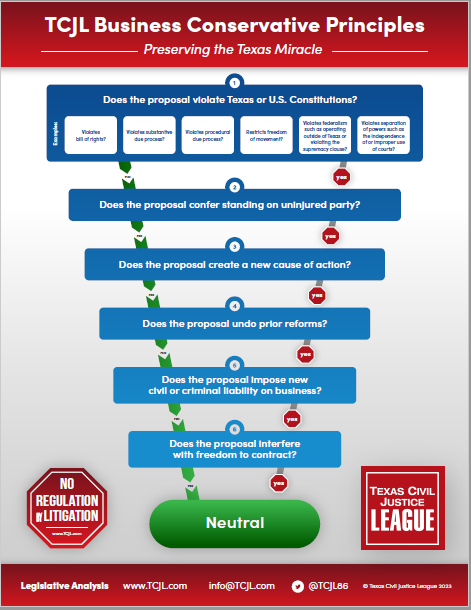 The Texas Supreme Court has reversed a Tyler Court of Appeals opinion affirming a trial court order striking a nonsubscribing employer’s designation of responsible third parties in an employee’s suit alleging the employer’s negligence.
The Texas Supreme Court has reversed a Tyler Court of Appeals opinion affirming a trial court order striking a nonsubscribing employer’s designation of responsible third parties in an employee’s suit alleging the employer’s negligence.
In re East Texas Medical Center (No. 23-1039; April 25, 2025) arose from an employment dispute. Plaintiff, an emergency-department nurse, alleged that she suffered a back injury during one of her shifts when a non-ETMC employee pushed a stretcher into her. Plaintiff initially sued the non-employee and his employer, but the trial court dismissed her claims because she failed to timely serve a Chapter 74 expert report. Plaintiff amended her pleadings to rope in ETMC, a non-subscriber, asserting negligence. ETMC moved for leave to designate them as responsible third parties. Plaintiff did not object, and the trial court granted the motion. Nearly a year later, Plaintiff moved to strike the designations on the basis that the RTP statute did not apply to an action to collect workers’ compensation benefits. The trial court agreed and struck the designations. On interlocutory appeal, the Tyler Court of Appeals denied mandamus relief. ETMC sought such relief from SCOTX.
In an opinion by Justice Boyd, SCOTX reversed the court of appeals and conditionally granted the writ. ETMC complied with the RTP statute (§ 33.004, CPRC) by making a timely motion to designate the non-employee and his employer. Plaintiff argued that the RPT statute excluded workers’ compensation actions, which includes employee actions against non-subscribing employers, citing the Tyler court’s decision in Kroger Co. v. Keng (Tex.App.—Tyler 1998), aff’d on other grounds, 23 S.W.3d at 352). In that case the court of appeals held that the non-subscribing employer “could not rely on the employee’s comparative negligence to reduce its liability because Chapter 33 (which at that time provided for ‘comparative’ negligence, rather than proportionate responsibility) did not apply because the employee’s claim was an ‘action to collect benefits [and damages] under the workers’ compensation laws of Texas.” The court based its decision on § 406.033, Labor Code, which prohibit a non-subscriber from asserting the employee’s contributory negligence as a defense. According to the court, this provision rendered all employers subject to the Texas Workers’ Compensation Act, not just subscribing ones. SCOTX didn’t reach that issue but affirmed on other grounds.
This case, however, squarely presented the issue of whether an employee’s negligence claim against a nonsubscriber is an action for workers’ compensation benefits. As Justice Boyd observed, “we have consistently and repeatedly characterized the [Workers’ Compensation] Act as protecting subscribing employers against ‘common-law’ claims while leaving nonsubscribing employers subject to ‘common-law’ claims.” The Workers’ Compensation Act itself, Justice Boyd went on, “distinguishes between a statutory ‘action to collect workers’ compensation benefits under the Act, which a subscriber’s employee may bring, and a common-law action to recover damages based on negligence, which a nonsubscriber’s employer may bring.” Based on that distinction, the Court held that a negligence claim against a nonsubscriber is not an action to collect workers’ compensation insurance benefits (e.g., medical benefits, income benefits, death benefits, burial benefits) but one to recover compensatory damages caused by the employer’s negligence. Additionally, Justice Boyd noted, although a subscriber is statutorily “subject to” the Act, no similar provision subjects a nonsubscriber to the Act.
Turning to the RPT issue, the Court rejected Plaintiff’s argument that even if her claim was not an action to recover workers’ comp benefits, ETMC still cannot designate RPTs because the Comp Act bars nonsubscribing employers “from relying on defenses like assumption of the risk, contributory negligence, or proportionate responsibility.” But, as Justice Boyd pointed out, the statute refers to an employer asserting the employee’s contributory or comparative negligence, not somebody else’s. At the same time, since the Legislature adopted the proportionate responsibility statute, “[t]he same facts that tended to prove assumption of the risk or contributory negligence may now be used to diminish a plaintiff’s recovery by demonstrating that the plaintiff bore some portion of the responsibility for his own injuries, or even to preclude the plaintiff from recovering at all by demonstrating that the plaintiff bore more than 50% of the responsibility for his own injuries” (citing Austin v. Kroger Tex., L.P., 465 S.W.3d 193, 212 (Tex. 2015)). In other words, while the statute waives a nonsubscriber’s defenses, it “does not preclude apportionment generally—it simply ‘discourages employers from opting out of workers’ compensation insurance by prohibiting a nonsubscriber from asserting that is employee was contributorily negligent, assumed the risk, or that a fellow employee’s negligence caused the employee’s injuries.”
Finally, the Court determined that the record contains at least some evidence that the non-employee and his employer have some share of the blame for the accident. The Court pointed to the testimony of Plaintiff and her co-worker and the non-employee’s admission that if he did what was alleged (he denied that), it would constitute negligence. In response to Plaintiff’s argument that if Chapter 74 made her file an expert report, it should make the hospital do it as well, the Court noted that the hospital is not a “claimant” under Chapter 74. All it has to do is submit sufficient evidence to create a fact issue regarding the non-employee’s fault. The trial court thus clearly abused its discretion in granting Plaintiff’s motion to strike. Since the hospital had no adequate remedy on appeal, the Court conditionally granted mandamus on the basis that “denial of relief would impair a defendant’s ‘significant right’ to ‘allow the fact finder to determine the proportionate responsibility of all responsible parties.’”












